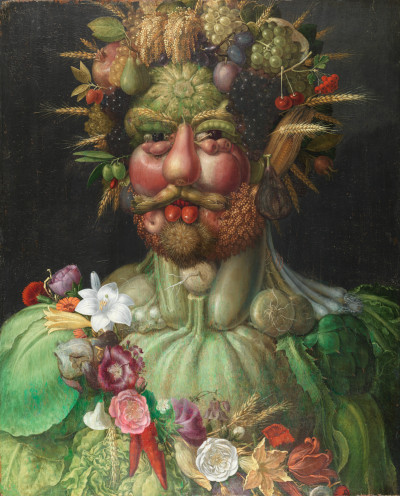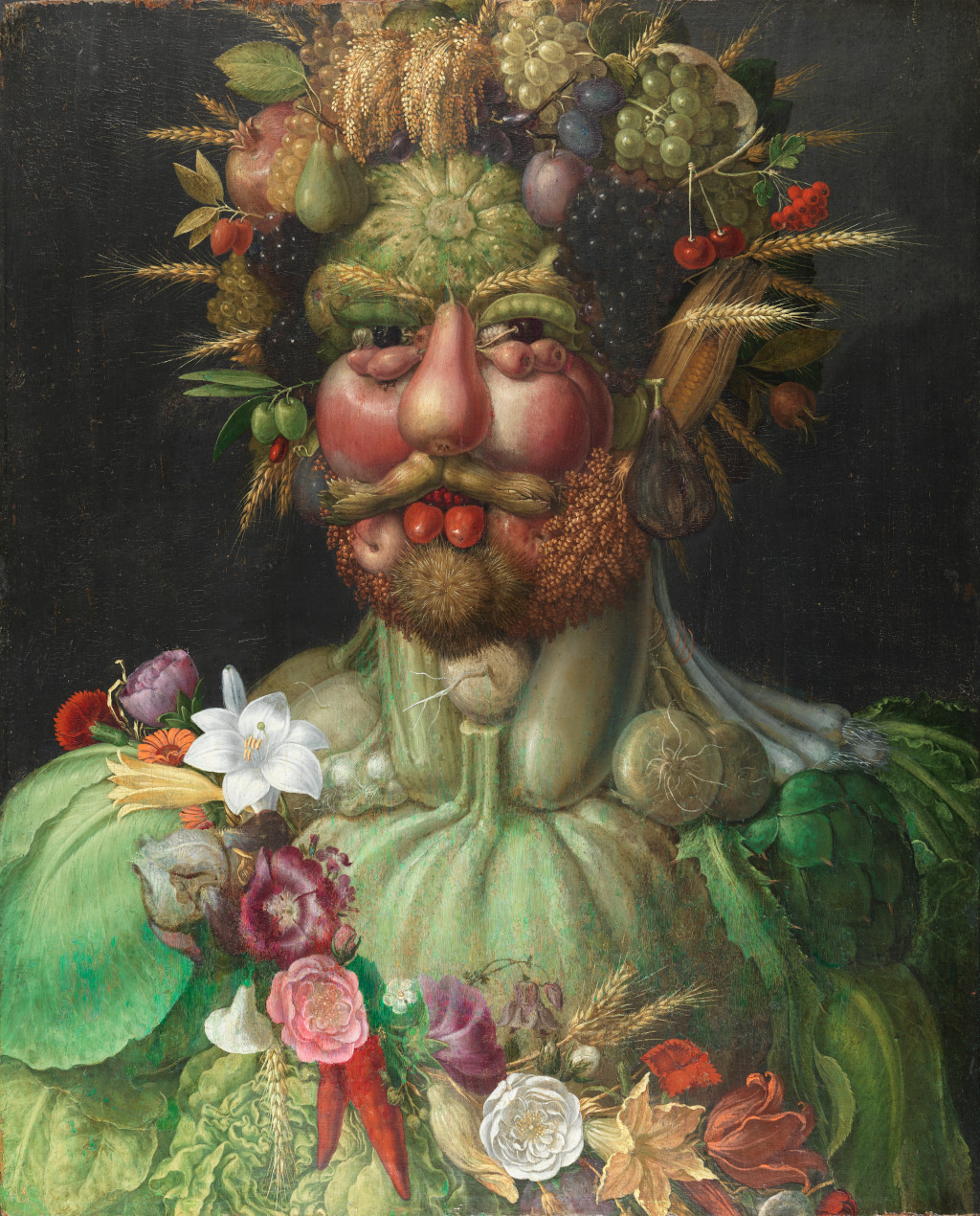Vertumnus is one of Arcimboldo's most famous paintings. It is a portrait of the Roman god Vertumnus, who represents change and transformation. The painting is a portrait of Vertumnus, the Roman god of seasons.
Description of the Painting
The picture comprises various fruits and vegetables that represent the different seasons. It is an oil painting with lots of fruits, vegetables, and flowers. Looking closely into the portrait, you will realise that all these vegetables, fruits, and flowers show a portrait of the Holy Roman Emperor Rudolf II. According to art analysts, they feel that Arcimboldo wanted to showcase the different seasons, evoke humour, and pass on a political meaning especially based on the selection of the fruits.
Other analysts feel that the portrait shows perfection in nature's balance and harmony during the emperor's reign. The painter had a unique style of making his work using fruits and nature. His artwork is filled with puzzles, riddles, and bizarre. In most of his paintings, you will see human heads with other objects or items. He loved to evoke humour and puzzles. His style was majorly on mannerism.
Background on the Artist
Giuseppe Arcimboldo was a painter from the Renaissance period. He is most famous for his portraits made of fruits, vegetables, flowers and other objects. His paintings are often called "trompe l'oeil" or "three-dimensional paintings" because they look like they are three-dimensional. Arcimboldo was born in Milan in 1527 and died in 1593. He was a court painter for Emperor Rudolf II, and he also painted portraits of the emperor himself. In this particular painting, the portrait has pears, gourds, apples, cherries, wheat, artichokes, corns, chestnuts, figs, olives, pomegranates, pumpkin, cabbage, peapods, and other beans. Roman mythology has different gods that people pray to, depending on what they want.
Meaning of Vertumnus
Vertumnus was famously known as the gods of change, growth, and seasons. It also signifies gardens, fruit, trees, and nature. One of Vertumnus's biggest flex is adjusting his form with his power and how he wanted to. He often went to seduce Pomona, the goddess of fruit and abundance in Roman mythology. Vertumnus disguised himself when he went to seduce Pomona, and people say that he warned her of the repercussions of rejecting an upcoming suitor.
Related Artworks by Arcimboldo
Some of his other famous paintings include Summer (1563), Spring (1573), Four Seasons in one Head (1590), The Jurist (1566), Water (1566), and the Allegory of Summer. He was a talented artist that loved painting people's heads with a deeper meaning, using fruits and nature items. Once it was completed, it was given to Rudolf II. Thereafter, its ownership shifted to the Swedish army. Today, you can find it at Skokloster Castle in Sweden.





